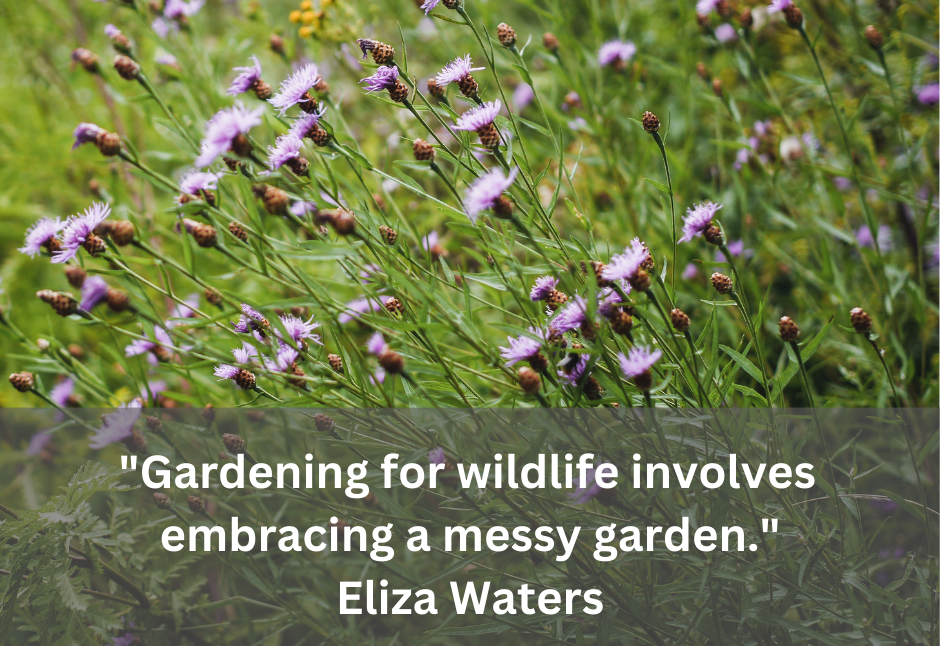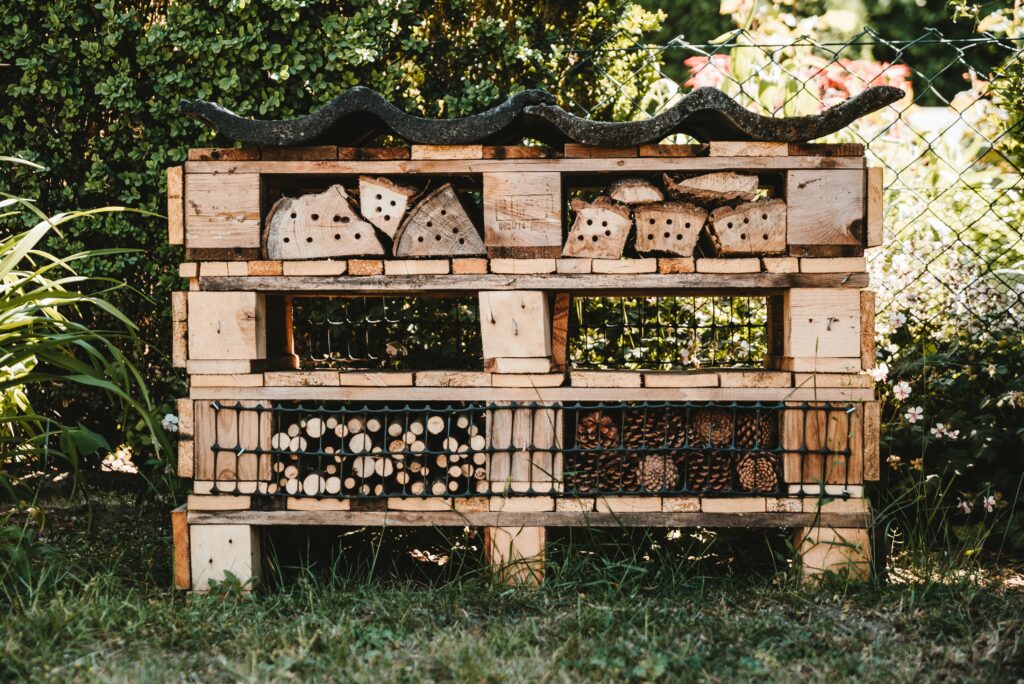The UK’s wildlife is continuing to decline according to the State of Nature Report 2023.
Like most other countries worldwide, the UK has seen a significant loss of its plants, animals and fungi. The data from State of Nature cover, at most, 50 years but this follows centuries of habitat loss, development and persecution. As a result, the UK is now one of the most nature-depleted countries on Earth with nearly one in six species threatened with extinction.
Since 1970 more than half of our flowering plants and mosses have been lost from areas where they used to thrive. Invertebrates such as insects, spiders and millipedes are found in 13% fewer places. However, there are much bigger declines in insects with important roles such as pollination and crop pest control. Bees, hoverflies and moths have decreased by 18% on average, while predatory insects such as the 2-spot Ladybird have declined by over a third (34%).

UK government’s policies are contributing to wildlife decline and pesticide overuse. Urgent action is needed to replace unsustainable subsidies, ban non-agricultural pesticide use, and enforce a peat-based compost ban. We gardeners hold the power to alter the course of events.
Looking after nature is good for humans, the planet and wildlife. Here are ten simple and practical ways to be kinder to garden wildlife in Autumn. Follow these top tips to help yourself and reverse nature’s decline.
If it’s closer to Spring – read the Spring guide here.
Provide Water to be Kinder to Garden Wildlife in Autumn
Many insects and other small animals struggle to find water in the autumn. You can help them out by providing a shallow dish of water and topping up each morning. But if you can, go one step further and create a wildlife pond, like mine, below.

A wildlife pond is a miniature ecosystem that supports a diverse array of plants, animals, and microorganisms. We might get most excited about aquatic creatures like frogs, toads, newts and dragonflies but the pond is a fantastic way to provide a consistent source of water for hedgehogs, bats, birds, butterflies, bees, and other insects, plus a habitat for many snails, worms and crustaceans such as water fleas and shrimp. These are all an essential part of the pond’s food chain and their abundance is a sign of a healthy pond ecosystem.
How to Create a Wildlife Pond
Choose a sunny location with some shade but ideally not directly beneath any deciduous trees. Create shallow areas around the edge of the pond (called the beach), don’t have too much hard edging which gets too hot for young amphibians, add water and aquatic plants and ideally a log pile nearby. A solar-powered aerator will move the water and add oxygen, and whatever you do, don’t add fish or fountains to a wildlife pond. The photo above is my (second – the first wasn’t big enough!) wildlife pond in late summer. It’s still a work in progress after years and it brings us huge joy daily.
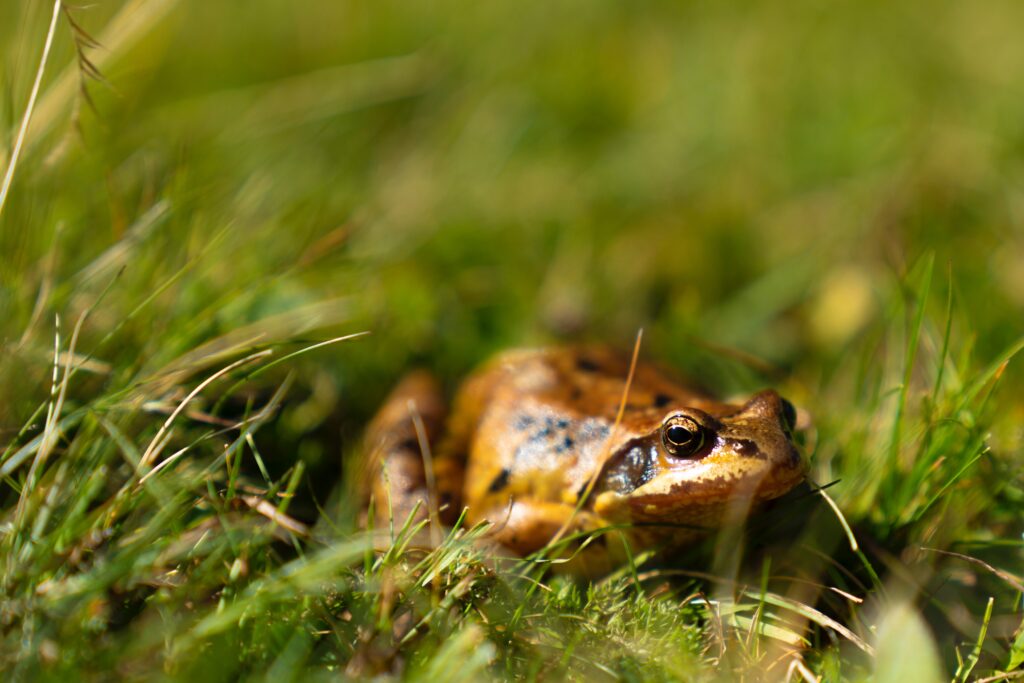
Pond Maintenance in Autumn
Late Autumn or early winter is the time for pond maintenance as juvenile amphibians will have left, while adult insects will be hibernating. Don’t go too mad as it’s all about balance. Try to remove most of the rotting leaves from your pond plants as they give off noxious chemicals when they decay. Scoop up any fallen leaves from nearby trees and plants too.
Thin out the plants that have gone crazy over the year – an excellent opportunity to offer what you remove to other pond growers in your local community.
TIP: The best way is to put the excess into a bucket of water for a couple of days, then wiggle it so that any critters can swim free before eventually removing the plants and pouring the water and creatures back into the pond,
Autumn is also a great time to add a floating tennis ball which stops the pond from freezing over in winter. I always forget this and end up doing the saucepan method on cold days – boil the kettle, fill the saucepan and position the saucepan on the surface of the ice until it melts a circular hole. This allows gases to escape and provides drinking/bathing water for birds.
Provide Food to be Kinder to Garden Wildlife in Autumn
Garden-grown Bird Food
As the days grow shorter and the nights grow colder, our gardens transform into havens for wildlife seeking sustenance and shelter. By making a few simple changes to our gardening practices, we can help provide food for wildlife in autumn and ensure that our gardens are a thriving ecosystem throughout the year.
Leave seedheads standing. Seedheads, such as those from sunflowers, poppies, and coneflowers, are a valuable source of food for birds and small mammals. Either leave them in situ or gather them up and tie them in bunches around the garden.
TIP: When you have an abundance you can also collect a few seedheads to keep your seed collection replenished for next to nothing.
Plant and encourage trees and shrubs that produce berries. Berries, such as those from hawthorns, rowans, dogwood, ivy, cotoneaster and viburnums are a favourite food source for many birds in Autumn.
TIP: Crab apples can be a winter gem for birds providing food throughout the winter. The constant freezing and thawing of their fruit softens them, making them particularly easy to eat.
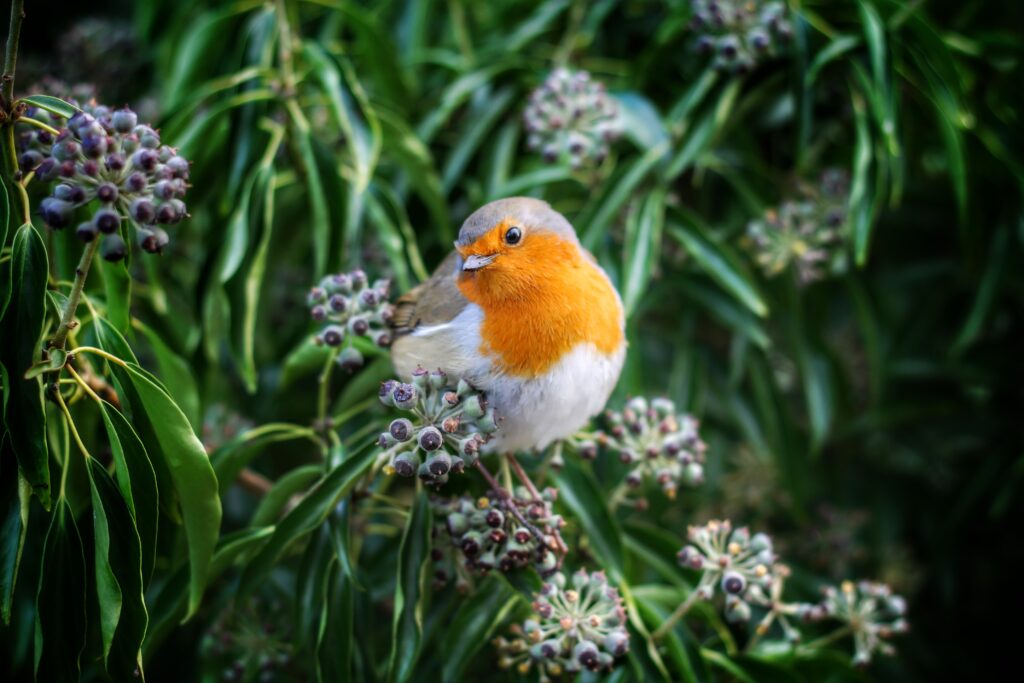
Bird Feeders
When natural food sources are scarce, it is especially important to provide birds with high-calorie foods, such as suet, nuts, and seeds. Sunflower seeds are especially popular in my garden, as well as nyjer seeds which are demolished by the finches. Follow the cues your visiting friends give you!
TIPS: It’s important to clean your feeders after each use to prevent the spread of disease. Feeders that attach to windows are a great way to observe birds, particularly if you don’t have a garden or are housebound. I enjoy watching the brave robins and the occasional juvenile starling from 50 cm away and consequently, as I am being kinder to garden wildlife in autumn, it too is being kind to me.
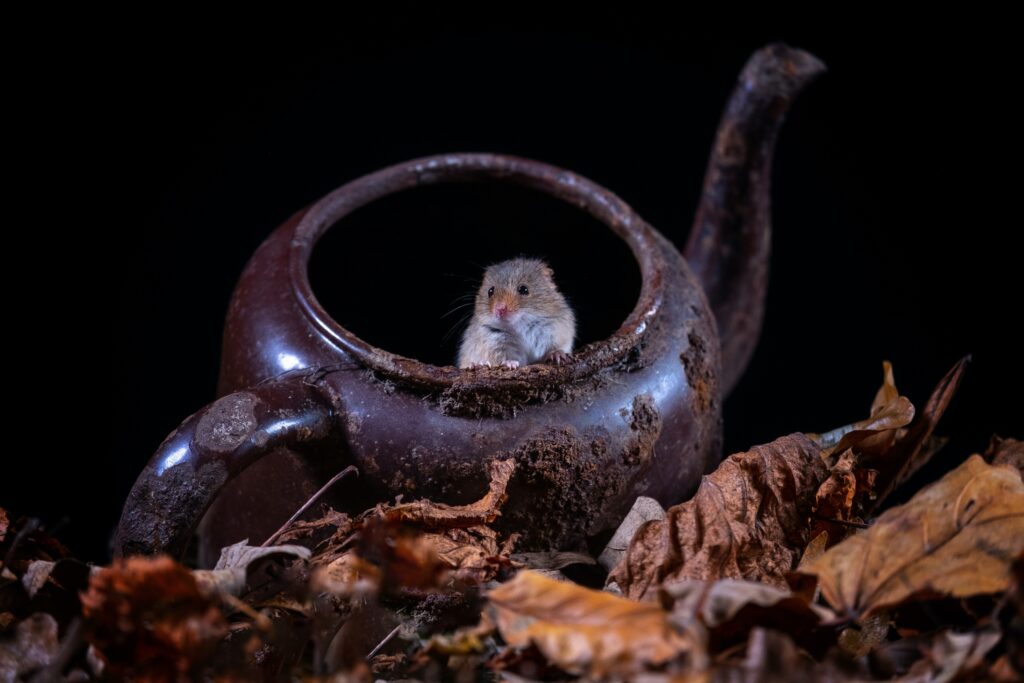
Create Shelters
Leave the leaves! Leaves provide shelter for insects and other invertebrates, which are an important food source for birds and other wildlife. Collect them up (if you must), and add them to your flower beds, your wild corner or compost heap, and stuff under hedges for the hedgehogs who will take them to their houses for hibernation.
Create a hedgehog hibernation home. You can build or buy a hedgehog house for hibernation. The best-bought ones are raised off the ground with feet and have waterproof roofs and a divider inside to deter cats. Remember never to put food in the house, this can attract unwanted attention. Stuff it full of hay and dried leaves and place it in a quiet sheltered area with the doorway facing away so the entrance is hidden. Voila!
Build bug hotels. A bug hotel is a simple structure that provides shelter for insects, such as ladybirds and lacewings, which are beneficial predators that help to control pests. It doesn’t have to be this fancy, hollow stems and leaf piles can be good hibernation sites for ground beetles. Spiders can also feed on pest insects so leave their eggs undisturbed under rocks and plant debris. Plant stems left to stand and even seed pods can provide much-needed shelter. so again resist the urge to clear all ‘finished’ plants away. Even hollow bamboo canes can make useful homes for earwigs which usefully feed on fruit tree pests. The one below is fancy but it doesn’t have to be.
Plant with Wildlife in Mind to be Kinder to Garden Wildlife in Autumn
Plant native flowers. One of the best ways to attract wildlife to your garden is to plant native species. Native plants are those that naturally occur in your region, and they are well-adapted to the local climate and soil conditions. This means that they will require less water and maintenance than non-native plants, and they will be more likely to attract pollinators and other wildlife. Visit Buy Native to support nature recovery by discovering wildflowers and UK native trees that will thrive in your garden. Look for plants that produce seeds or berries and species that have a long flowering season.
Plant bulbs. In addition to planting flowers, you can also provide early nectar for pollinators by planting bulbs. Bulbs are a great way to add colour and interest to your garden, and they also provide a valuable source of food for pollinators in the early spring. Some good choices for early-blooming bulbs include snowdrops, daffodils, grape hyacinth and crocus.
Plant trees. Lastly, infuse your space with vibrancy and vitality by planting a small native tree. Autumn provides the ideal conditions for planting as trees are dormant, reducing the risk of damage. Crab apple, hawthorn, and rowan are well-suited for smaller spaces, providing essential sustenance and refuge for birds, insects, and small mammals during the colder months.

Improve your Soil with Green Manure
Cover crops and green manures improve soil structure and organic matter levels. You can grow these crops on bare ground in autumn and dig into the soil a few months later. I grew crimson clover (Trifolium incarnatum) last year in my veg beds because it fixes nitrogen from the air to the soil. Healthy soil is essential for wildlife because it provides a foundation for plant growth, supports a variety of invertebrates, and provides shelter and nesting sites. It also helps to regulate water quality and contribute to climate change mitigation. In other words, good soil is a win-win for the environment, wildlife and humans.
Take Care when using Garden Machinery
Hedgehogs and other small mammals are preparing for hibernation in Autumn and strimmers in particular can easily harm them. Check the areas you’re planning to work in before you start or, to be super kind to garden wildlife in autumn and all seasons, avoid using strimmers altogether.
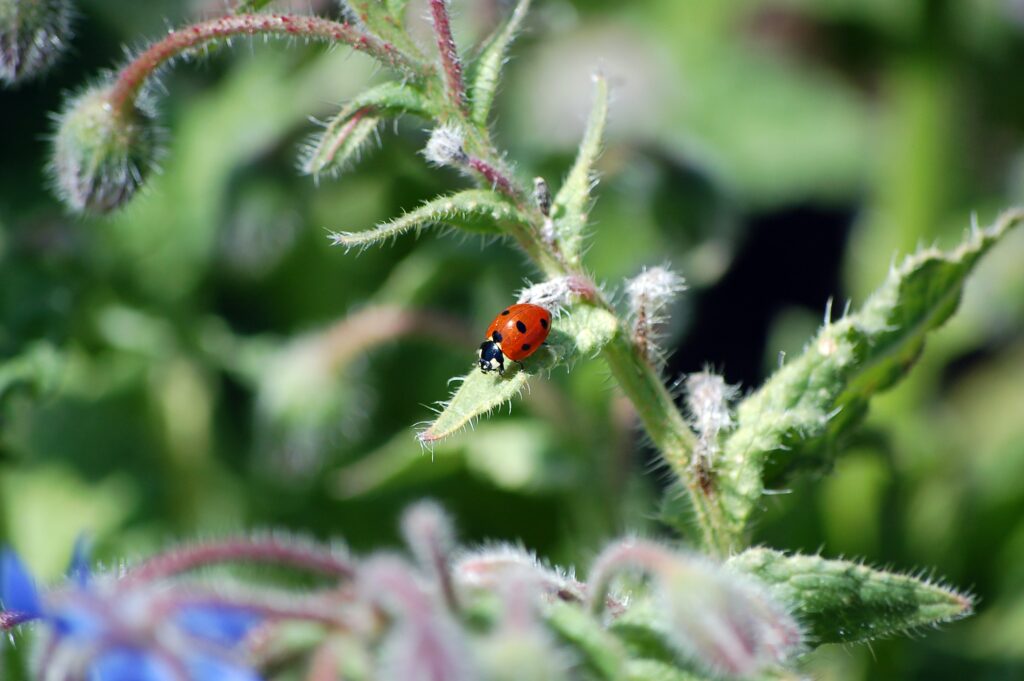 Avoid Pesticides
Avoid Pesticides
Toxic chemicals used to kill weeds, diseases and pests can damage the health of your growing area, and all the life forms within and beyond it. Think about prevention rather than replacing chemical sprays with organic equivalents. Create a biodiverse environment to achieve balance. Encourage natural predators such as hedgehogs, birds, hoverflies, ladybirds and parasitic wasps with your planting scheme and approach to wildlife gardening.
Compost your Garden, Household and Kitchen Waste
Making your own compost is a sustainable and rewarding way to enrich your garden soil so that more critters, your plants and edibles can thrive! You need a mix of brown (such as dry leaves, twigs, and shredded paper) and green materials (like grass clippings, vegetable scraps, and coffee grounds) for the composting process to work.
TIPS: Water the compost regularly to keep it moist but not soggy – this is where I went wrong as mine was too dry. I also failed to turn the compost every few weeks because I didn’t want to disturb wildlife so do it, but do it gently.
And it goes without saying that should you need to buy any compost, choose peat-free. Here is an excellent guide on how to begin composting from the RSPB.
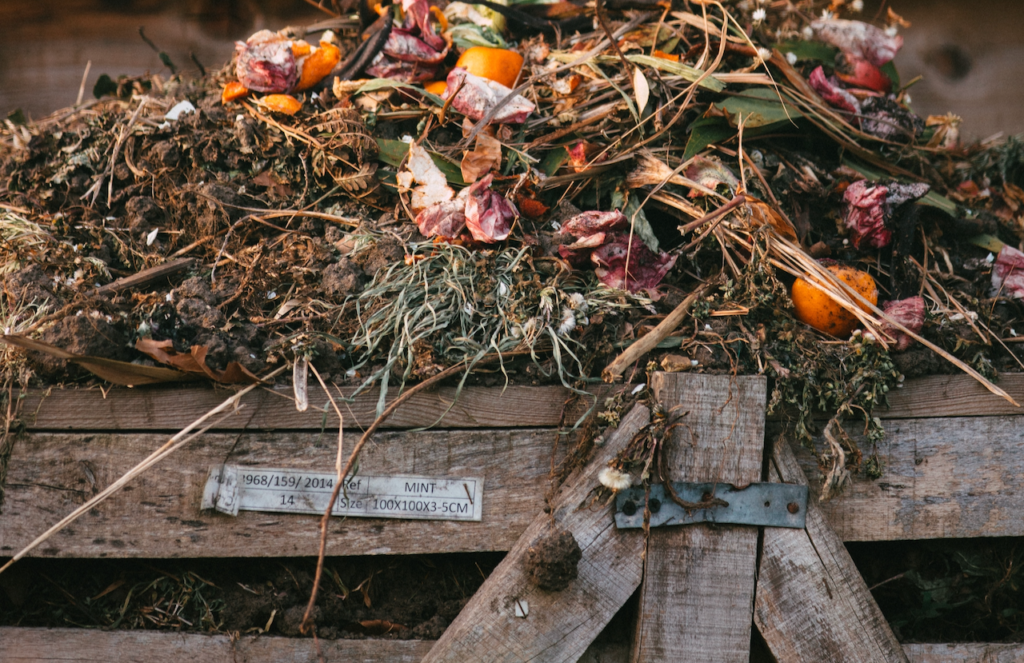
Support Wildlife Organisations
There are many organisations that work to protect and be kinder to garden wildlife in Autumn and indeed all year round. You can support their work by donating money or volunteering your time.
Read more about my volunteering for intertidal surveys and supporting seagrass restoration on The Solent, here. I love it and you never know what it could lead to.
Get Involved in Your Community
Talk to your neighbours about how you can work together to create a more wildlife-friendly community. You could start a wildlife gardening club or organise a community cleanup day. Where I live, we’ve got a Sustainability Group with pillars for the circular economy, climate, biodiversity and food. Connect with your local council or MP to ask them to support your wildlife-friendly policies.
Being Kind to Garden Wildlife in Autumn and Beyond

By following these tips, you can help to make your garden a haven for wildlife, not just in Autumn but all year round. Humans have done so much harm to the natural world in recent years that I see it as our duty to do what we can, even on a small scale, to try and redress the balance.
You might be interested in the Spring-focused edition of this blog, which you can read here.
There are so many more things we can and must do to be kinder to garden wildlife and nature as a whole, and much of it starts by deepening your personal connection to it. This blog contains myriad ways to do that while also explaining the psychological construct of Nature Connectedness.
And before you go don’t forget to register to receive your FREE Vitamin N Adventure 😃. This monthly freebie includes one or more nature-based activities that are aligned to the wheel of the year.

